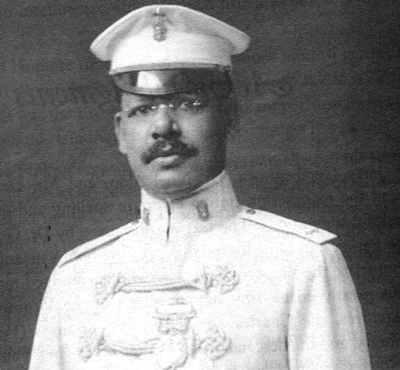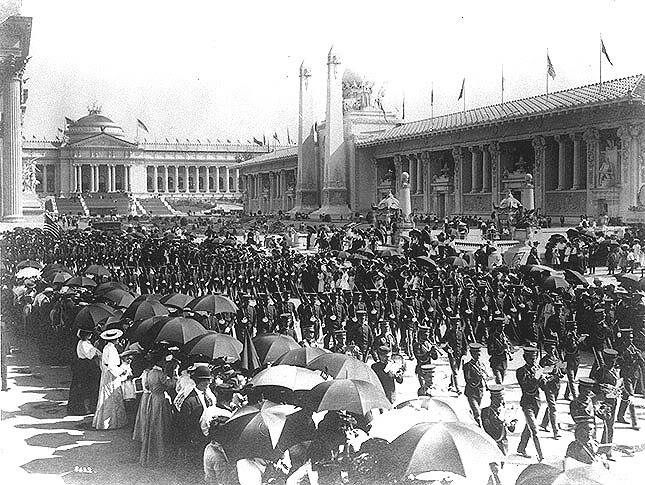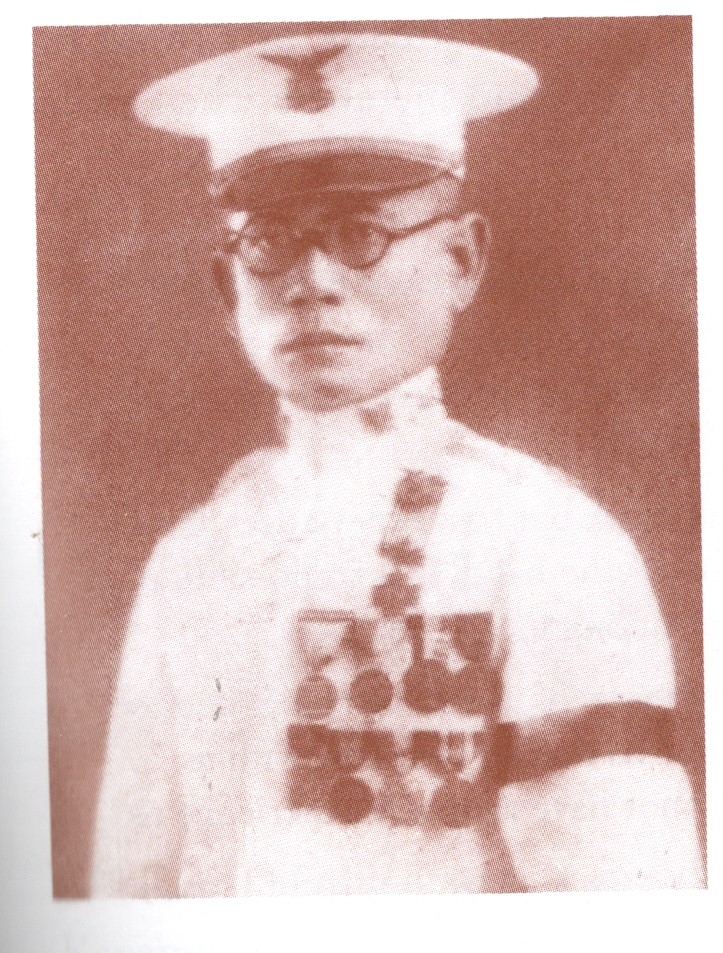Philippine Constabulary Band on:
[Wikipedia]
[Google]
[Amazon]
The Philippine Constabulary Band was the principal military band of the Philippine Constabulary, and later, as the Philippine Army Orchestra, of the Army of the Commonwealth of the Philippines. Between its establishment in 1901 and dissolution during World War II, it registered a reputation for musical excellence both in the Philippines and the United States, and is credited with being the first band other than the United States Marine Band to provide the musical escort to the president of the United States during a U.S. presidential inauguration. The Philippine National Police Band from Camp Crame,considers the successor to the Philippine Constabulary Band. The Philippine Army Band considers itself as a successor too.
 The Philippine Constabulary Band was formed on the orders of
The Philippine Constabulary Band was formed on the orders of
 The band's first overseas performance came just three years after its formation when it accompanied the
The band's first overseas performance came just three years after its formation when it accompanied the
 The day after the inauguration the band was invited to perform for the president and Mrs. Taft at the White House, becoming the first band in history from outside the continental United States to perform at a White House reception. (It is also believed this may have been the first time an African-American conducted a musical performance at the White House, Loving being African-American.)
After its inaugural engagement, the band remained in the mainland United States for several months, performing at other public events. A concert at the New York Hippodrome met with a "rousing reception" in which "encore after encore" was demanded, the band finally concluding with the overture from ''
The day after the inauguration the band was invited to perform for the president and Mrs. Taft at the White House, becoming the first band in history from outside the continental United States to perform at a White House reception. (It is also believed this may have been the first time an African-American conducted a musical performance at the White House, Loving being African-American.)
After its inaugural engagement, the band remained in the mainland United States for several months, performing at other public events. A concert at the New York Hippodrome met with a "rousing reception" in which "encore after encore" was demanded, the band finally concluding with the overture from ''

History
Formation and early years
 The Philippine Constabulary Band was formed on the orders of
The Philippine Constabulary Band was formed on the orders of Colonel
Colonel (abbreviated as Col., Col or COL) is a senior military officer rank used in many countries. It is also used in some police forces and paramilitary organizations.
In the 17th, 18th and 19th centuries, a colonel was typically in charge of ...
Henry Allen, the first chief of the Philippine Constabulary. Walter Loving
Walter Howard Loving (December 17, 1872 – February/March 1945) was an African American soldier and musician most noted for his leadership of the Philippine Constabulary Band. The son of a former slave, Loving led the band during the 1909 U.S. p ...
, a former United States Army regimental band leader who had been educated at the New England Conservatory of Music, successfully applied for the directorship of the new organization which saw its first public performance in late 1902 at the Manila Elks Club
The Benevolent and Protective Order of Elks (BPOE; also often known as the Elks Lodge or simply The Elks) is an American fraternal order founded in 1868, originally as a social club in New York City.
History
The Elks began in 1868 as a soci ...
. The band's first members were recruited by Loving from community ensembles that performed in the small towns of Luzon, some of whom were former musicians in Spanish Army
The Spanish Army ( es, Ejército de Tierra, lit=Land Army) is the terrestrial army of the Spanish Armed Forces responsible for land-based military operations. It is one of the oldest active armies — dating back to the late 15th century.
The ...
bands. Auditions for the ensemble were fierce; 300 clarinetists, for instance, tried out for just eight billets.
As the constabulary's only band, it was a fixture of ceremonial and social engagements at Malacañang Palace where it met with the appreciation of Governor-General of the Philippines
The Governor-General of the Philippines ( Spanish: ''Gobernador y Capitán General de Filipinas''; Filipino: ''Gobernador-Heneral ng Pilipinas/Kapitan Heneral ng Pilipinas''; Japanese: ) was the title of the government executive during the colo ...
William Howard Taft. Taft responded favorably to virtually all of Loving's appropriations requests for the band; his support of the group led to the unofficial moniker "Taft's Own."
St. Louis World's Fair
 The band's first overseas performance came just three years after its formation when it accompanied the
The band's first overseas performance came just three years after its formation when it accompanied the Philippine Scouts
The Philippine Scouts ( Filipino: ''Maghahanap ng Pilipinas'' or ''Hukbong Maghahanap ng Pilipinas'') was a military organization of the United States Army from 1901 until after the end of World War II. These troops were generally Filipinos ...
to the Louisiana Purchase Exposition
The Louisiana Purchase Exposition, informally known as the St. Louis World's Fair, was an international exposition held in St. Louis, Missouri, United States, from April 30 to December 1, 1904. Local, state, and federal funds totaling $15 mi ...
of 1904 in St. Louis, Missouri
St. Louis () is the second-largest city in Missouri, United States. It sits near the confluence of the Mississippi and the Missouri Rivers. In 2020, the city proper had a population of 301,578, while the bi-state metropolitan area, which e ...
. Four companies of Scouts had been sent to the fair to drill the manual of arms A manual of arms was an instruction book for handling and using weapons in formation, whether in the field or on parade. Such manuals were especially important in the matchlock and flintlock eras, when loading and firing was a complex and lengthy ...
for President Theodore Roosevelt, who requested that the Constabulary Band play one of his favorite marches, '' The Garryowen'', which it obliged as the president "clapped heartily." John Philip Sousa, who was in attendance at the fair, was among those who heard the Philippine Constabulary Band play and remarked, "I am simply amazed. I have rarely heard such playing."
1909 U.S. presidential inauguration
The Philippine Constabulary Band was the lead unit in the United States presidential inaugural parade of 1909, which saw its former patron William Howard Taft inaugurated as president of the United States. It was the first time a band other than the United States Marine Band served as the musical escort to the president of the United States. (The Band of the Philippine Scouts appeared at the 1905 inaugural of Theodore Roosevelt, but did not lead the procession.) The 1909 inaugural parade occurred in a record-setting snowstorm, and was the first time most of the bandsmen had seen snow. Afterwards, ''The New York Times'' wrote of the band's appearance: The day after the inauguration the band was invited to perform for the president and Mrs. Taft at the White House, becoming the first band in history from outside the continental United States to perform at a White House reception. (It is also believed this may have been the first time an African-American conducted a musical performance at the White House, Loving being African-American.)
After its inaugural engagement, the band remained in the mainland United States for several months, performing at other public events. A concert at the New York Hippodrome met with a "rousing reception" in which "encore after encore" was demanded, the band finally concluding with the overture from ''
The day after the inauguration the band was invited to perform for the president and Mrs. Taft at the White House, becoming the first band in history from outside the continental United States to perform at a White House reception. (It is also believed this may have been the first time an African-American conducted a musical performance at the White House, Loving being African-American.)
After its inaugural engagement, the band remained in the mainland United States for several months, performing at other public events. A concert at the New York Hippodrome met with a "rousing reception" in which "encore after encore" was demanded, the band finally concluding with the overture from ''Tannhäuser
Tannhäuser (; gmh, Tanhûser), often stylized, "The Tannhäuser," was a German Minnesinger and traveling poet. Historically, his biography, including the dates he lived, is obscure beyond the poetry, which suggests he lived between 1245 and ...
'' followed by the ''Stars and Stripes Forever
"The Stars and Stripes Forever" is a patriotic American march written and composed by John Philip Sousa in 1896. By a 1987 act of the U.S. Congress, it is the official National March of the United States of America.
History
In his 1928 autobi ...
''. On April 17, 1909, the band returned to Washington at the request of Helen Taft
Helen Louise Taft (née Herron; June 2, 1861 – May 22, 1943), known as Nellie, was the wife of President William Howard Taft and the first lady of the United States from 1909 to 1913.
Born to a politically well-connected Ohio family, Nel ...
to perform at the opening of West Potomac Park. Later, it appeared in Seattle at the Alaska-Yukon-Pacific Exposition to herald the arrival of President Taft for his inspection of the fairgrounds. The band then traveled to San Francisco, California
San Francisco (; Spanish for " Saint Francis"), officially the City and County of San Francisco, is the commercial, financial, and cultural center of Northern California. The city proper is the fourth most populous in California and 17th ...
, to depart for the return voyage to the Philippines. As their troopship was departing, Taft ordered his own vessel to pull alongside. Seeing the president's ship approach, the band struck up ''Hail to the Chief
"Hail to the Chief" is the personal anthem of the president of the United States, adapted by James Sanderson from an original Scottish Gaelic melody.
The song's playing accompanies the appearance of the president of the United States at many ...
'' prompting Taft to shout back "goodbye, boys – I wish you a pleasant voyage!"

Panama Pacific International Exposition
The band's third major overseas performance came in 1915 when it was engaged to appear at thePanama Pacific International Exposition
Panama ( , ; es, link=no, Panamá ), officially the Republic of Panama ( es, República de Panamá), is a transcontinental country spanning the southern part of North America and the northern part of South America. It is bordered by Cos ...
in San Francisco. Its reputation by then well-secured in the United States, the band remained stationed in California for nearly a year, during which time it performed 115 public concerts. During this time it again met John Philip Sousa, who on one occasion guest conducted the band and afterwards commented, "when I closed my eyes, I thought it was the United States Marine Band."
Changing directors
In 1915 Walter Loving sought, and was granted, a medical disability due to worsening tuberculosis. He was replaced as director of the band by Pedro B. Navarro. Navarro had been with the PC Band since 1902, served as Loving's assistant conductor since 1904, and took over when Loving fell ill during the 1915 Panama Pacific International Exposition. He was succeeded by José Silos in 1918. During this period the quality of the band suffered and, in 1920, Loving returned to the Philippines to rebuild the group. As part of his long-term plan to ensure the future stability of the band, he hand-picked bandsman Alfonso Fresnido to succeed him. Fresnido was sent to Ohio to study conducting at the Dana Music Institute (now the Dana School of Music at Youngstown State University) before returning to take over the band from Loving, who retired a second time in 1923.
Reorganization as Philippine Army Orchestra
With the establishment of theCommonwealth of the Philippines
The Commonwealth of the Philippines ( es, Commonwealth de Filipinas or ; tl, Komonwelt ng Pilipinas) was the administrative body that governed the Philippines from 1935 to 1946, aside from a Government in exile of the Commonwealth of the Phil ...
in 1935, the Constabulary Band was officially renamed the Philippine Army Orchestra and redesignated a Philippine Army unit. (After the Constabulary was reestablished, the band was not reassigned to it). Alfonso Fresnido continued as the band's director through 1937. That year, Walter Loving accepted an invitation from President Manuel L. Quezon
Manuel Luis Quezon y Molina, (; 19 August 1878 – 1 August 1944), also known by his initials MLQ, was a Filipino lawyer, statesman, soldier and politician who served as president of the Commonwealth of the Philippines from 1935 until his de ...
to again take up direction of the unit at the rank of lieutenant-colonel
Lieutenant colonel ( , ) is a rank of commissioned officers in the armies, most marine forces and some air forces of the world, above a major and below a colonel. Several police forces in the United States use the rank of lieutenant colonel ...
in the Philippine Commonwealth Army and joint appointment as "Special Adviser to the President of the Philippines". The band premiered the ''Collectivista March (Marcha de los Collectivistas)'', a tribute march composed by Loving (music arranged by Msgt. Daniel Fajardo, assistant band conductor of the Philippine Constabulary Band 1933-1939) and dedicated to President Quezon, at Luneta Park
Rizal Park ( fil, Liwasang Rizal, es, link=no, Parque Rizal), also known as Luneta Park or simply Luneta, is a historic urban park located in Ermita, Manila. It is considered one of the largest urban parks in the Philippines, covering an are ...
later that year.
In 1939, the Philippine government sent the band to represent the commonwealth at the Golden Gate International Exposition in San Francisco. Loving retired for the third time the following year; he remained in Manila and would occasionally take up the baton as guest conductor.
Dissolution and legacy
The band ceased to exist following the Japanese occupation of the Philippines in 1942. During the course of hostilities, most of its members were killed. After the war, which neither Loving nor Fresnido survived, the Philippine Army organized a new group, the "Philippine Army Band", as its premier musical ensemble under the direction of Lieutenant (later, Colonel) Antonino Buenaventura. The modern Philippine Army Band considers itself the successor to the Philippine Constabulary Band. According to it, "the PA Band is the fulfilment of the first American civil governor William Howard Taft’s promise of forming a Filipino military band that would be a counterpart of the famous US Marine Band." It wears the green uniforms of the army in formal occasions, as well as a historical uniform which debuted in the 1990s -rayadillo
Rayadillo was a blue-and-white striped cotton or flannel material used to make the military uniforms worn by Spanish colonial soldiers from the mid 19th century until the early 20th century. It was commonly worn by soldiers posted in overseas Sp ...
dress blue, which is worn with the straw hat for bandsmen and the pilt helmet by the drum major and bandmaster, carrying on an additional tradition, that of the bandsmen of military bands and civil marching bands that played alongside men of the Philippine Revolutionary Army
The Philippine Revolutionary Army, later renamed Philippine Republican Army (Spanish: ''Ejército Revolucionario Filipino''; Tagalog: ''Panghimagsikang Hukbong Katihan ng Pilipinas''), was the official armed forces of the First Philippine Repu ...
during much of the Philippine Revolution and the Philippine-American War.
The PC Band itself was reconstituted postwar in 1946 under new leadership, and produced a number of LPs promoting Filipino music in the 1970s. The revived band's first bandmaster was then Captain Jose M. Campaña who led the band until 1966 when he retired from the service as full-fledged Colonel. He was honored posthumously as the father of the modern PC Band by then Chief of the Philippine Constabulary, Gen. Fidel V. Ramos. By the 70s its full dress uniforms were by then in the scarlet and gold mirroring that of the United States Marine Band but with AFP insignia and PC patches, it was also worn by guards of honour which the service provided. In 1974 the Integrated National Police
The Integrated National Police (INP) ( Filipino: ''Pinagsamang Pulisyáng Pambansà'', ''PPP''; Spanish:''Policía Nacional Conjunto'', ''PNC'') was the municipal police force for the cities and large towns of the Republic of the Philippines. On ...
Metropolitan Police Force Command Band was raised as part of the nationalization of the police departments as the official police band for Metro Manila, with its 5 divisions sporting its own bands. Today, the Philippine National Police Band, the official senior police band under the current Philippine National Police, also continues the heritage of the old band.
List of commanders
Reputation and reception
The U.S. military periodical ''Army and Navy Life'' described the band as "one of the finest of all military bands in the world", and the ''Pacific Coast Musical Review'' considered the band "in a class by itself."See also
* Potenciano GregorioReferences
{{Authority control American military bands Filipino military bands Musical groups from Manila Musical groups established in 1901 Musical groups disestablished in 1942 Wind bands History of the Philippines (1898–1946)